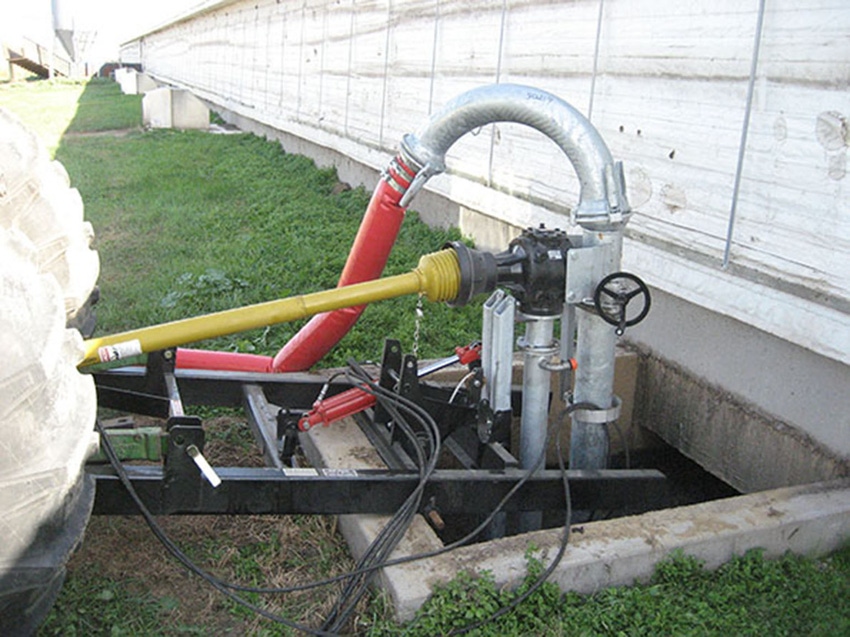Biomass in final digestion not only takes up the water content from the liquid-phase digestion, but also retains nutrients derived from the hog manure.
September 3, 2020

The function and multiple benefits of anaerobic digestion of animal wastes are well recognized. This process breaks down organic wastes, produces biogas as a reliable source of renewable energy, captures and reduces the emission of greenhouse gases, controls pathogens at thermophilic temperatures and thus achieves sanitation of the farm environment, and, potentially, recycles nutrients for the production of bio-organic materials useful as bio-organic fertilizer.
On the one hand, this technology is maturing with an emerging market worldwide. On the other hand, two major issues still remain challenging that hamper its applications and commercial development.
First, conventional large centralized digester systems are expensive in construction, complex in operation and not cost-effective for small to medium farms. Second, the large volume of daily effluent or wastewater from farms and digesters requires further treatment for safe discharge.
To overcome these challenges, a novel technology has been developed (Shih, 2013, 2015ab, 2016) that generates biogas energy from thermophilic digestion, but also produces organic fertilizer of high economic value (Holistic Digester System). The system consists of three stages of continuous bioprocesses: (1) hydrolytic degritter; (2) liquid-phase anaerobic digester; and (3) solid-phase anaerobic digester (Figure 1). It will be insulated and operated at thermophilic temperatures of approximately 120 to 140 degrees F.

Manure slurry at total solids concentration of 5 to 6% is scraped daily into the degritter (Stage 1), where steam is injected to raise the temperature to 140 degrees F. After 24 hours of residence, the slurry flows through a tubular plug-flow digester by gravity flow for a 10-day retention time (Stage 2). The liquid digestate or effluent will be sprayed over dry biomass, which is preloaded in the solid phase digester (Stage 3).
The biomass can be chopped corn stalks, prairie grass, lignin-free forestry waste or other biomass. The biomass will be digested (retention time of two days) to produce more biogas and, more importantly, to incorporate the liquid digestate, which is rich in nitrogen, phosphorus, potassium and other bio-organic matters. The biomass with liquid digestate contains approximately 40 to 60% water and can be dried and formulated to generate a high-value organic fertilizer.
The HDS system is projected to be modularized and constructed in one structure to accommodate, for example 2,000 hogs, allowing the application of a single unit for a small farm and multiple units for larger farms. Central manufacture of HDS modules will drastically reduce the cost of the HDS. The ultimate goal is to provide a compact, efficient, low-cost and easy-to-operate system with the potential to eliminate wastewater and generate income from biogas and bio-organic fertilizer.
We investigated the technical feasibility of this technology for processing pig manure by construction of an HDS prototype at the Swine Educational Unit of North Carolina State University. The system consisted of a 5 cubic meter primary anaerobic digester, two 2.5 m3 solid-state anaerobic digesters, a temperature control system and a wastewater flow control system to accommodate the daily manure slurry from 60 finishing pigs.
Switchgrass was used as the biomass in the secondary digester. The operation of the pilot HDS from hydrolysis, liquid digestion to solid digestion was at a temperature of 122 to 129 degrees F, pH of 6.3, and an average flow rate of swine manure of 401 liters per day with a 12.5-day retention time.
The average biogas production rate was stable at 1,933 liters per day. The total solids and volatile solids reduction rates were 52% and 63%, respectively. Chemical oxygen demand was reduced by 41%.
Analyses of the dry weight of the final digested biomass product (we used switchgrass as the biomass) displayed approximately two-fold increases in the concentrations of nitrogen, phosphorus and potassium, compared with the original undigested switchgrass (Figure 2).

The results strongly indicate that the biomass in the final solid-phase digestion cannot only takes up the water content from the liquid-phase digestion, but also retains nitrogen, phosphorus, potassium and other nutrients derived from the hog manure. The results indicate the pilot HDS system was effective in processing swine manure into biogas and organic fertilizer. Additional work is ongoing to further evaluate the suitability of the HDS system as a means to reduce the environmental impact of pork production and to determine its economic feasibility.
References
Shih, J.C.H. 2013. Hydrolytic degritter. U.S. Patent (pending).
Shih, J.C.H. 2015a. Development of anaerobic digestion of animal wastes: from laboratory, research and commercial farms to a value added new product. Chapter 14, pp 339-354, in Anaerobic Biotechnology, H.P. Fang and T. Zhang (eds.), Imperial College Press, London, UK.
Shih, J.C.H. 2015b. System and method for anaerobic digestion of animal wastes. U.S. Patent (pending).
Shih, J.C.H. 2016. Secondary solid-phase anaerobic digestion for more biogas production. U.S. Patent 9,242,881 (issued) and International Patent (pending).
Sources: Jay J. Cheng, Jason Shih and Eric van Heugten, who are solely responsible for the information provided, and wholly own the information. Informa Business Media and all its subsidiaries are not responsible for any of the content contained in this information asset.
You May Also Like



